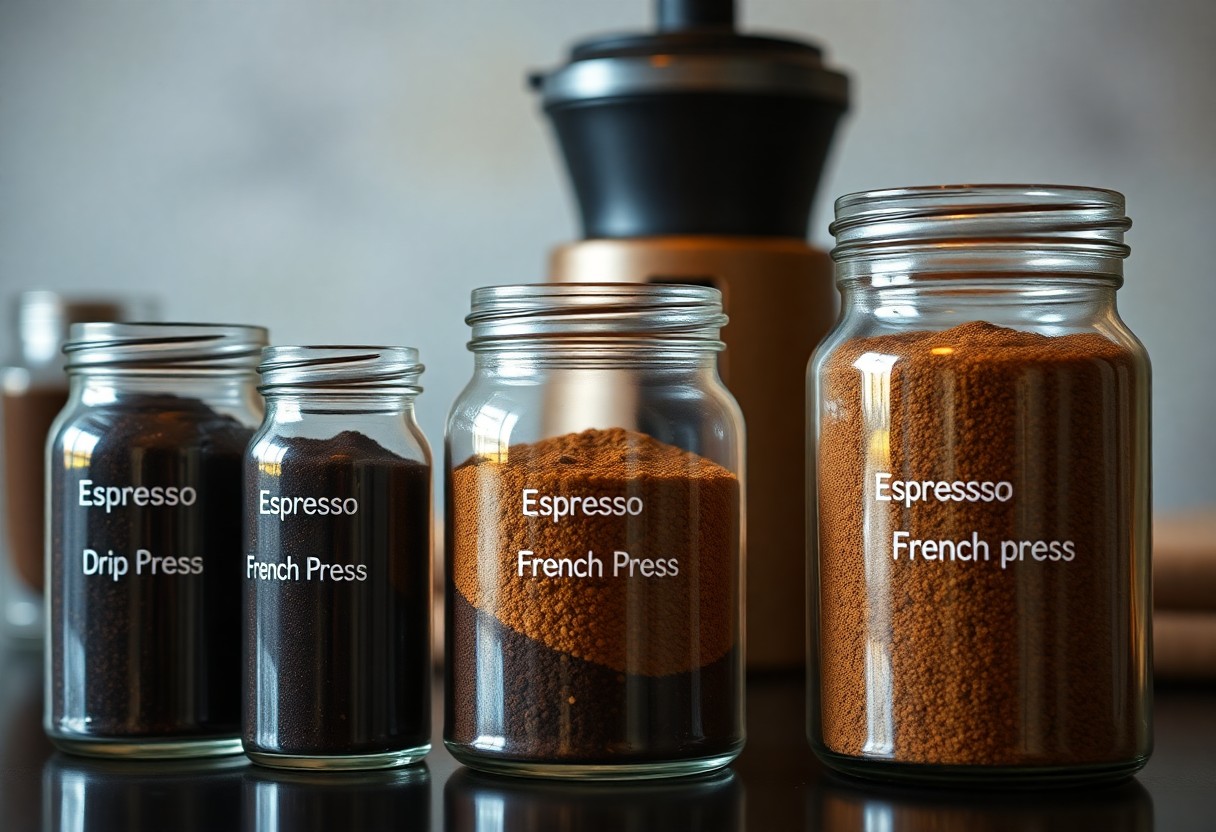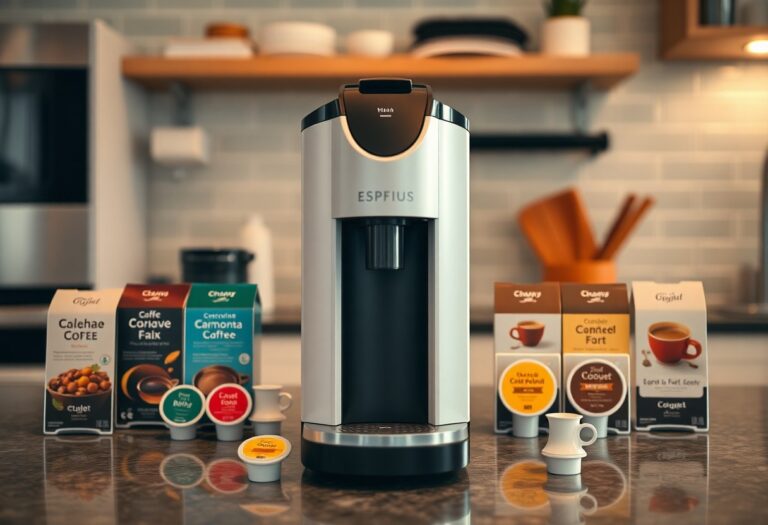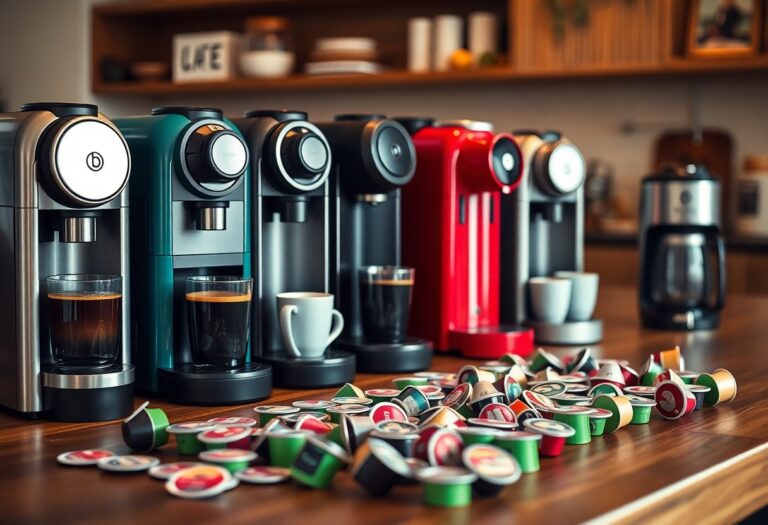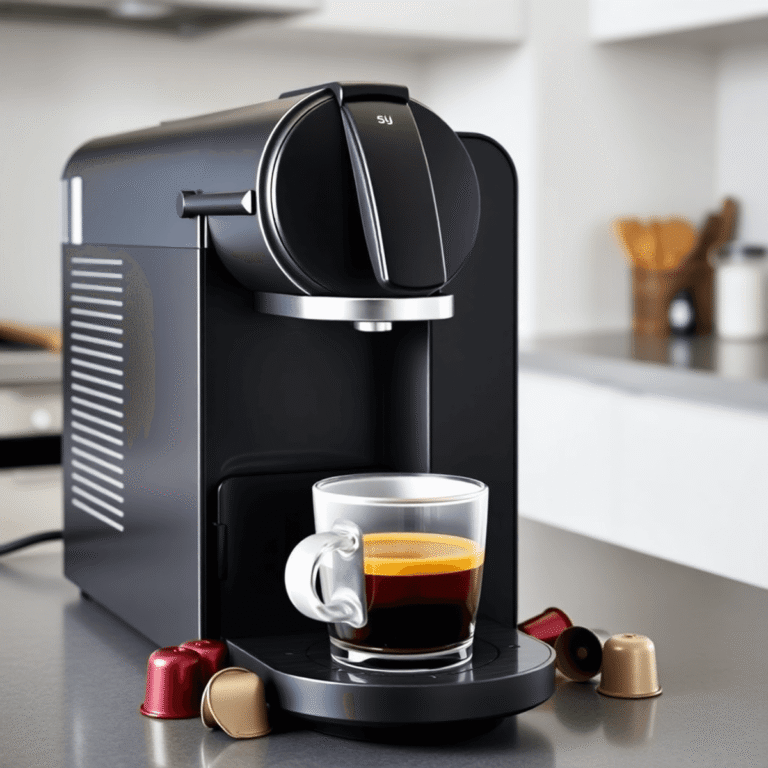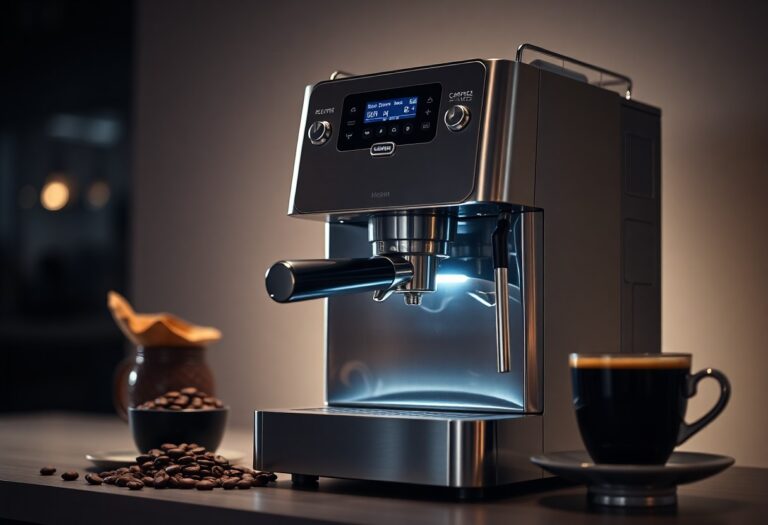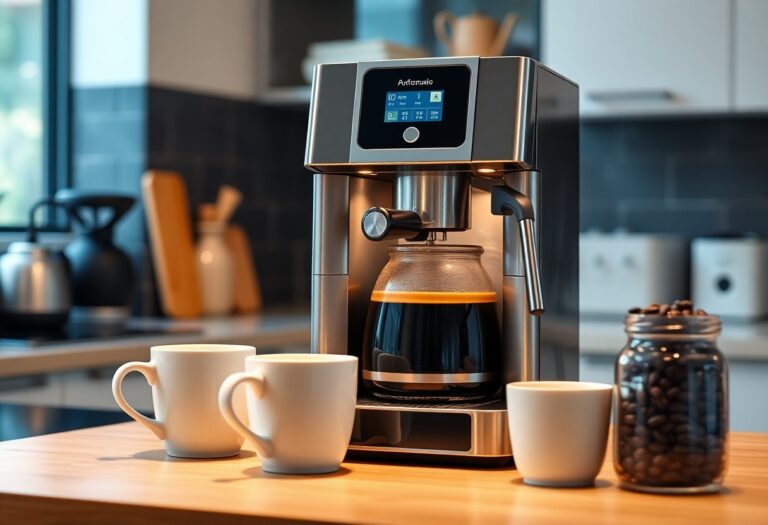What Grind Size for a Coffee Machine – Grinding Specifications
Just think about how the grind size of your coffee beans can dramatically affect the flavor and strength of your brew. If you’re using a coffee machine, achieving the right grind size is crucial for extracting the flavors you desire from your coffee, as different brewing methods require specific grind settings. Choosing the wrong size can lead to a bitter or weak cup. To help you navigate this important choice, explore The Complete Guide to Coffee Grind Size and find the perfect grind for your machine.
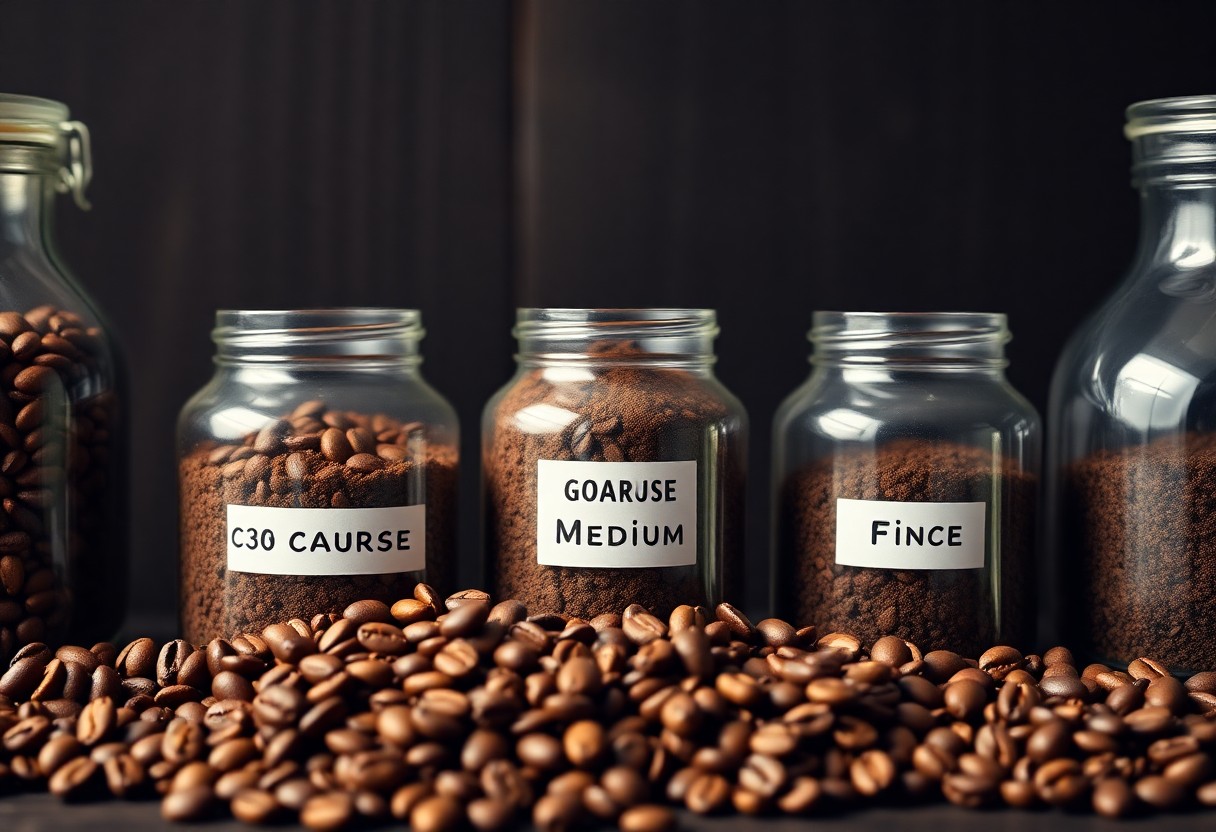
Key Takeaways:
- The grind size for coffee affects the extraction process, influencing flavor and strength.
- Different brewing methods require specific grind sizes: coarse for French press, medium for drip coffee, and fine for espresso.
- Uniform grind size enhances consistency in brewing and improves the overall taste of the coffee.
- Experimentation with grind size can help you find the perfect balance for your personal flavor preferences.
- Regularly checking and adjusting your grind size can keep your coffee machine operating optimally for the best cup of coffee.
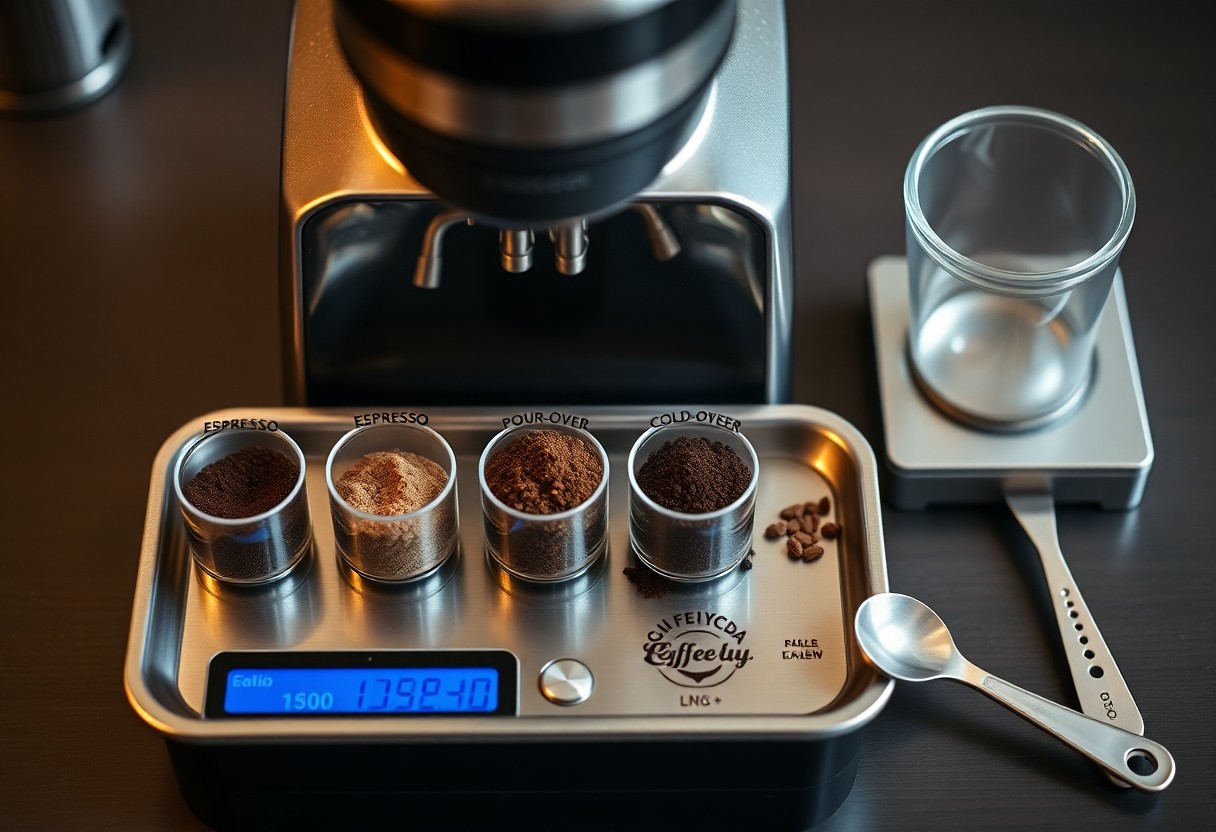
The Science of Grind Size and Its Impact on Flavor
The grind size of your coffee beans plays a pivotal role in shaping the overall flavor profile of your brew. Adjusting the particle size alters how efficiently water extracts soluble compounds and oils from the coffee grounds during brewing. Finer grinds increase the surface area exposed to water, yielding a richer and often more intense flavor, while coarser grinds might produce a lighter, softer taste. Understanding this relationship helps you fine-tune your coffee experience to match your personal preferences.
The Extraction Process: How Grind Size Influences Taste
In the extraction process, grind size directly affects the interplay between water and coffee particles. A finer grind leads to faster extraction times, pulling out more oils and acids, which can result in a more robust flavor. Conversely, if the grind is too coarse, the water may pass through too quickly, resulting in under-extraction and a weak, sour brew. Finding the sweet spot allows you to optimize flavor richness and balance based on your preferred brewing method.
The Link Between Grind Size and Brew Time
Grind size is intrinsically linked to brew time, with finer grinds requiring less time to achieve optimal extraction compared to coarser grinds. This relationship stems from the concept of surface area; a greater surface area in finer particles allows for quicker extraction of flavor compounds. For instance, espresso typically uses a fine grind and brews in about 25-30 seconds, whereas a French press with a coarse grind can steep for around 4 minutes. Adjusting your grind size based on the desired brew time can significantly enhance the final cup.
Fine-tuning the brew time according to grind size not only maximizes flavor but also helps to prevent undesirable taste profiles. For example, if using a fine grind in a French press, the brewing time should be shortened to avoid over-extraction, which leads to bitterness. Conversely, using a coarse grind in an espresso machine may require longer extraction times to achieve depth of flavor. You’ll want to adjust the grind size and brew time in tandem to create a custom coffee experience that fits your taste.
Matching Grind Size to Coffee Machines
The grind size must correspond to the type of coffee machine you use, as this significantly affects extraction rates and flavor. By understanding the specific grind requirements for each method, you can elevate your brewing experience, achieving the perfect balance of strength, body, and nuance in your cup. Tailoring your grind to your machine ensures you harness the full potential of the coffee beans you choose.
Espresso Machines: Fine Grind for Bold Brews
Espresso machines require a fine grind to create a rich and concentrated shot. This allows for optimal extraction during the short brewing time, typically ranging from 25 to 30 seconds, resulting in a robust flavor and thick crema.
Drip Coffee Makers: Medium Grind for a Balanced Cup
For drip coffee makers, a medium grind strikes the perfect balance, yielding a well-rounded cup. This grind size allows for a steady extraction, creating a smooth and flavorful coffee experience without over-extraction bitterness.
A medium grind, often compared to granulated sugar, ensures that water flows evenly through the grounds during the brewing process. This size facilitates an ideal surface area for extraction without blocking the filter, promoting a harmonious balance of acidity and sweetness. Specifically, aiming for a grind that is too fine can lead to a bitter brew, while a grind that is too coarse may result in under-extraction, leaving you with a weak flavor profile.
French Press: Coarse Grind for Richness and Body
The French press method calls for a coarse grind, which contributes to a full-bodied and rich brew. This size minimizes sediment and aids in a longer extraction time, creating deeper flavor notes.
Using a coarse grind, similar to sea salt, allows the extraction to occur gradually, enhancing the coffee’s natural oils and flavors. With a brewing time of around four minutes, maintaining a coarser grind prevents clogging the plunger and assures that the coffee grounds stay suspended in water rather than over-extracting, resulting in bitterness. This method retains more of the coffee’s important oils, which enhances its body and richness, leading to an enjoyable and robust tasting experience straight from the French press.
Identifying Your Coffee Preference
Knowing your coffee preference is key to choosing the right grind size. You might enjoy a bold espresso or a lighter drip coffee; each requires different grind specifications. By understanding what flavor profiles and brewing methods appeal to you, you’ll be better equipped to select the grind that enhances your preferred taste and aroma. Spending a little time defining your coffee style can significantly improve your brewing experience.
Experimenting with Different Grind Sizes
Adjusting grind sizes is about finding what best suits your taste. Start with a standard grind for your preferred method and then gradually alter the size—either coarser or finer. A methodical approach to experimenting, perhaps by adjusting the grind every few brews, helps you detect subtle differences in flavor, extraction time, and mouthfeel, leading you to the ideal cup.
The Role of Coffee Bean Type in Selecting Grind Size
Your choice of coffee bean plays a pivotal role in determining the optimal grind size. Different beans possess unique flavor profiles and solubility rates, which impact extraction. For instance, oils in darker roasts may release more flavor with a coarse grind, while lighter roasts often shine with a finer grind, bringing out floral or fruity notes.
When dicking out grind sizes, consider the roast level and the bean origin. Dark roasts, often oily and dense, generally benefit from a coarser grind to avoid over-extraction, which can result in bitterness. On the other hand, light roasts are more fragile; a fine grind enhances their nuanced flavors while allowing quicker extraction due to lower density. For instance, a Kenyan coffee with bright acidity may shine better with a finer grind, while a French roast blends well using a coarser texture. This thoughtful consideration can transform your coffee experience, enabling you to appreciate the distinct characteristics of each type of bean.
Common Pitfalls and Misconceptions
Misunderstanding grind size can lead to frustrating coffee experiences. Many coffee enthusiasts assume that a finer grind always equals a stronger flavor, a misconception that often results in bitterness. Others may believe that a coarser grind guarantees a milder taste, which can leave your brew weak and lacking depth. Grasping the nuances of grind size helps avoid these common mistakes and enhances your coffee-making skills.
The Overlooked Consequences of Incorrect Grind Size
Choosing an incorrect grind size can dramatically alter your coffee’s flavor profile. A grind that’s too fine for a drip coffee maker can cause over-extraction, leading to a bitter taste, while a coarser grind may produce under-extraction, resulting in a weak, watery brew. Understanding the relationship between grind size and brew method ensures you achieve the optimal extraction and flavor balance for every cup.
Debunking Myths: Size Doesn’t Fit All
It’s a common myth that all coffee beans should be ground to the same size, regardless of your brewing method. This belief can lead to disappointing results. Different brewing techniques—such as espresso, French press, and pour-over—require specific grind sizes to bring out the best in your coffee. For example, espresso demands a fine grind for optimal pressure extraction, while a French press benefits from a coarse grind to avoid a gritty mouthfeel.
Understanding that diverse brewing methods call for tailored grind sizes is necessary for a perfect cup. For instance, a fine grind suits espresso machines, enhancing the rich, concentrated flavor by optimizing extraction time. In contrast, pour-over and drip methods thrive on medium grinds, striking a balance between speed and flavor extraction. Embracing these differences not only elevates your coffee but also empowers you to adjust your technique based on personal taste and brewing preferences.
Expert Tips for Achieving the Perfect Grind
To master your coffee grind, consistency is key. Use a quality burr grinder for uniformity, and calibrate according to your brewing method. Adjust the grind size gradually, tasting the results to refine extraction. Consider the grind-to-water ratio to enhance flavor. Other tips include:
- Experiment with grind size for each specific brew method.
- Grind fresh just before brewing to maintain flavor integrity.
- Store beans in an airtight container to prevent staleness.
- Ensure your grinder is clean to avoid cross-contamination.
Perceiving the aroma and flavor will guide you in perfecting your grind.
Recommended Grinders and Techniques for Each Brew Method
Each brewing method has specific requirements that can make or break your coffee experience. For Espresso, a reliable burr grinder capable of fine adjustments is important; the grind size should be about 0.5mm. For French Press, a coarser grind around 1.0mm works best. Drip coffee machines benefit from a medium grind, similar to granulated sugar. Knowing your ideal grind size can significantly impact the flavor profile.
Keeping Your Grind Consistent: Maintenance and Adjustments
Maintaining consistency in your grind not only impacts the flavor but also ensures that your brewing process is smooth. Regularly cleaning your grinder is vital to prevent old coffee grounds from tainting your fresh beans. Also, keep an eye on burr wear; replace them when necessary. Make minute adjustments based on the feedback you receive from the brewed coffee. A well-calibrated grinder allows you to adapt your grind size in accordance with humidity, bean density, or even the specific roast type, ensuring that each cup tastes just as good as the last.
Final Words
Conclusively, understanding the appropriate grind size for your coffee machine can significantly enhance your brewing experience. By selecting the right grind—from coarse for French presses to fine for espresso—you ensure optimal extraction and flavor. Tailoring the grind to your machine will help you achieve that rich, satisfying cup you desire. Experiment with different grind sizes to find what best complements your brewing style, and enjoy the rewarding journey of crafting the perfect coffee.
FAQ
Q: What grind size is best for a drip coffee maker?
A: For a drip coffee maker, a medium grind size is generally preferred. This size allows water to flow through the coffee grounds at an optimal rate, ensuring even extraction and a balanced flavor profile. A medium grind resembles granulated sugar and provides a good balance between flavor and extraction time.
Q: How fine should the coffee be ground for espresso?
A: Espresso requires a fine grind size, similar in texture to table salt. This fine grind increases the surface area, enabling quick extraction as hot water passes through the coffee grounds under pressure. A consistent fine grind is imperative for achieving a strong and flavorful espresso shot.
Q: What is the appropriate grind size for a French press?
A: A coarse grind is ideal for a French press. This size resembles sea salt and allows for proper steeping without excessive sediment in the final cup. The coarser grind ensures that the coffee infuses well without over-extraction, maintaining a smooth and full-bodied flavor.
Q: How does grind size affect cold brew coffee?
A: For cold brew coffee, a coarse grind is recommended. The larger coffee particles steep in cold water for an extended period, usually 12-24 hours. A coarse grind prevents over-extraction, resulting in a smooth and less acidic brew. Additionally, it makes the filtration process easier, reducing sediment in the final drink.
Q: Can I use the same grind size for different brewing methods?
A: It is not ideal to use the same grind size for different brewing methods, as each method extracts flavors differently. Each brewing method has a specific grind size that complements it, impacting the overall taste and quality of the coffee. Adjusting the grind size according to the brewing method ensures the best flavor profile for your coffee.

